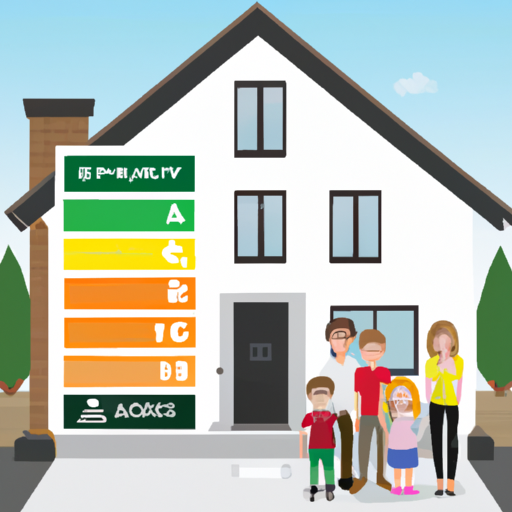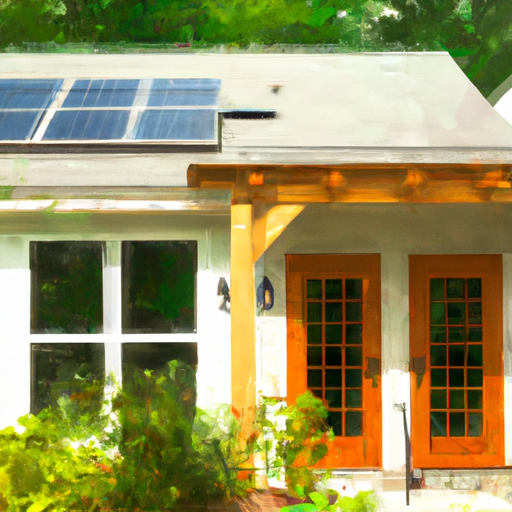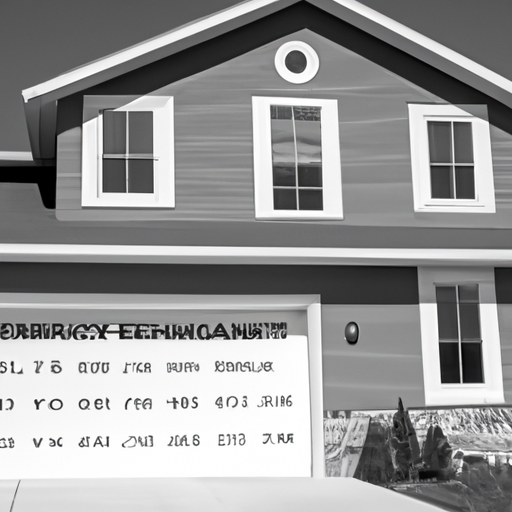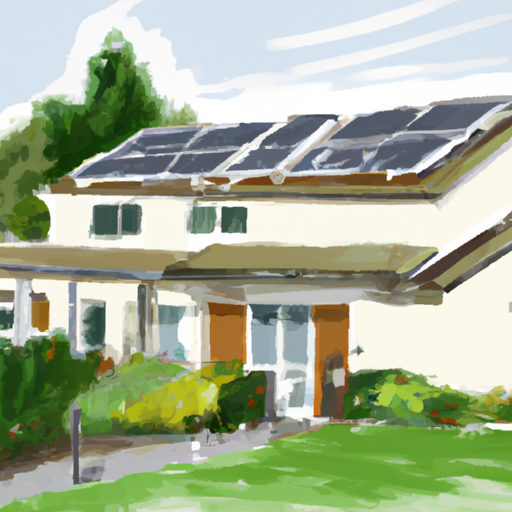LEED certification offers homeowners energy efficiency, cost savings, and increased resale value. Selling a LEED-certified home can attract environmentally conscious buyers and qualify for green financing. To maximize value, homeowners should highlight the certification, emphasize energy efficiency, and collaborate with real estate agents specializing in sustainable homes. Online platforms like Redfin offer an alternative to traditional agents, allowing homeowners to sell “as is” without repairs. Other options include Zillow, Trulia, Realtor.com, or working with a real estate agent.
Are you a homeowner looking to make your home more energy-efficient and cost-effective? Have you ever heard of LEED certification and wondered what it is all about? In this comprehensive guide, we will explore the ins and outs of LEED certification and how it can benefit homeowners like you. From understanding the certification process to maximizing the value of a LEED-certified home, we will cover it all. Additionally, we will delve into alternative home selling sites such as Redfin and compare them to traditional options. So, if you are considering selling your home or simply want to learn more about the benefits of LEED certification, keep reading to find out how you can make the most of your property.
- 1. Understanding LEED Certification: A Comprehensive Guide for Homeowners
- 2. The Benefits of LEED Certification for Homeowners: Energy Efficiency and Cost Savings
- 3. Selling Your LEED-Certified Home: Why It’s the Best Place to Buy a Home
- 4. Listing Your LEED-Certified Home: How to Sell It As Is and Maximize Its Value
- 5. Exploring Alternative Home Selling Sites: Comparing Redfin and Other Options
1. Understanding LEED Certification: A Comprehensive Guide for Homeowners

Understanding LEED Certification: A Comprehensive Guide for Homeowners
LEED Certification, which stands for Leadership in Energy and Environmental Design, is a globally recognized rating system developed by the U.S. Green Building Council (USGBC) to assess the sustainability and environmental performance of buildings. While LEED is commonly associated with commercial and institutional structures, it is increasingly becoming relevant for homeowners seeking to create eco-friendly and energy-efficient homes.
LEED offers various levels of certification, including Certified, Silver, Gold, and Platinum, based on a point system that evaluates different aspects of a building’s design, construction, operation, and maintenance. These aspects include energy efficiency, water conservation, indoor environmental quality, sustainable materials and resources, and site selection.
For homeowners, obtaining LEED Certification for their homes can bring numerous benefits. Firstly, LEED-certified homes are designed to be more energy-efficient, resulting in reduced utility bills and a smaller carbon footprint. This is achieved through features such as high-performance insulation, efficient heating and cooling systems, and energy-saving appliances.
Secondly, LEED Certification ensures a healthier indoor environment for homeowners. LEED requires homes to have improved ventilation systems, use low-toxicity materials, and prioritize natural lighting, which can contribute to better air quality, reduced exposure to harmful chemicals, and increased comfort.
Moreover, LEED-certified homes often have better water efficiency, utilizing fixtures and technologies that reduce water consumption. This not only helps homeowners save on their water bills but also conserves this valuable resource.
Additionally, LEED promotes the use of sustainable materials and resources in home construction. This includes utilizing renewable materials, recycling construction waste, and incorporating efficient building techniques. By choosing sustainable materials, homeowners contribute to the reduction of environmental impact and support the local economy.
In terms of resale value, LEED-certified homes typically have a competitive edge in the real estate market. Homebuyers are increasingly prioritizing sustainability and energy efficiency when searching for homes. A LEED certification can make
2. The Benefits of LEED Certification for Homeowners: Energy Efficiency and Cost Savings

LEED certification offers numerous benefits for homeowners, with energy efficiency and cost savings being at the forefront. By opting for a LEED-certified home, homeowners can significantly reduce their energy consumption and subsequently lower their utility bills.
One of the primary advantages of LEED certification is the incorporation of energy-efficient features into the home’s design and construction. These features often include advanced insulation materials, high-performance windows, and energy-efficient appliances. By utilizing these elements, LEED-certified homes consume less energy, resulting in reduced utility costs for homeowners.
Moreover, LEED-certified homes are designed to maximize natural light and airflow, minimizing the need for artificial lighting and mechanical ventilation systems. This not only reduces energy consumption but also creates a more comfortable living environment for homeowners.
LEED certification also encourages the use of renewable energy sources, such as solar panels or geothermal systems. By harnessing clean energy, homeowners can further decrease their dependence on traditional energy sources and reduce their carbon footprint.
In addition to energy savings, LEED certification can enhance a home’s resale value. As more homebuyers become aware of the benefits of sustainable living and energy efficiency, LEED-certified homes are in high demand. These homes often sell faster and at a higher price compared to non-certified homes. Therefore, investing in a LEED-certified home can prove to be a wise financial decision for homeowners.
Furthermore, LEED-certified homes require less maintenance and repairs due to their high-quality construction and durable materials. This can result in long-term cost savings for homeowners, as they spend less on repairs and replacements over time.
In conclusion, LEED certification offers homeowners significant benefits in terms of energy efficiency and cost savings. By investing in a LEED-certified home, homeowners can enjoy reduced energy consumption, lower utility bills, increased resale value, and decreased maintenance costs. Considering the growing interest in sustainable living, LEED-certified homes are an attractive option for homeowners looking to maximize their comfort, savings, and environmental impact
3. Selling Your LEED-Certified Home: Why It’s the Best Place to Buy a Home

Selling Your LEED-Certified Home: Why It’s the Best Place to Buy a Home
When it comes to selling your home, there are numerous factors that can influence its marketability and attractiveness to potential buyers. One increasingly popular selling point that homeowners are leveraging is the LEED certification. LEED, which stands for Leadership in Energy and Environmental Design, is a globally recognized green building certification program.
So, why is a LEED-certified home considered the best place to buy a home? Let’s explore the benefits it offers both homeowners and potential buyers.
1. Energy Efficiency: LEED-certified homes are designed and built to meet strict energy efficiency standards. They incorporate features such as high-performance windows, superior insulation, and energy-efficient appliances. These elements not only reduce the home’s environmental impact but also result in lower utility bills for homeowners. When selling a LEED-certified home, you can highlight these energy-saving features, attracting buyers who prioritize sustainable living and long-term cost savings.
2. Health and Indoor Air Quality: LEED certification also focuses on creating a healthy living environment. LEED-certified homes are designed to maximize natural light, improve ventilation, and use non-toxic materials, promoting better indoor air quality. This aspect is particularly appealing to homebuyers concerned about the health and well-being of their families. By emphasizing the health benefits of your LEED-certified home, you can capture the attention of health-conscious buyers.
3. Enhanced Value and Marketability: LEED certification adds significant value to a home. A LEED-certified home is perceived as a higher-quality property, built with superior craftsmanship and attention to detail. Potential buyers are often willing to pay a premium for a home that offers sustainable living and reduced environmental impact. Additionally, LEED-certified homes tend to sell faster than conventional homes, as they appeal to a growing market of environmentally conscious buyers.
4. Access to Green Financing and Incentives: Many financial institutions and government programs offer
4. Listing Your LEED-Certified Home: How to Sell It As Is and Maximize Its Value

Listing Your LEED-Certified Home: How to Sell It As Is and Maximize Its Value
If you are a homeowner who has invested in a LEED-certified home, you have already taken a significant step towards sustainability and energy efficiency. LEED (Leadership in Energy and Environmental Design) is a globally recognized certification program that promotes green building practices. Not only does it benefit the environment, but it also offers numerous advantages to homeowners, including potential financial gains when it comes time to sell.
Selling a LEED-certified home “as is” means that you are presenting your property in its current condition, without any repairs or renovations. This approach can be appealing to buyers who are looking for move-in ready homes or those who value the benefits of a LEED-certified property. Here are some tips to help you sell your LEED-certified home as is and maximize its value:
1. Highlight the LEED Certification: Make sure to prominently feature the LEED certification in your listing. Emphasize the energy efficiency, sustainable materials, and reduced environmental impact of your home. This will attract buyers who are specifically searching for eco-friendly properties.
2. Showcase the Benefits: Educate potential buyers about the advantages of living in a LEED-certified home. Mention the potential energy savings, improved indoor air quality, and enhanced comfort that they can enjoy. These benefits can be compelling selling points for environmentally conscious buyers.
3. Provide Documentation: Gather all relevant documentation related to your LEED certification, such as energy performance reports, water efficiency records, and material specifications. This will help potential buyers understand the value and credibility of your LEED-certified home.
4. Collaborate with Real Estate Agents: Seek out real estate agents who specialize in sustainable homes or have experience selling LEED-certified properties. They will have the expertise to effectively market your home to the right audience and maximize its value.
5. Leverage Online Platforms: Utilize popular home selling sites like Redfin
5. Exploring Alternative Home Selling Sites: Comparing Redfin and Other Options

When it comes to selling a home, homeowners have a plethora of options to choose from. One popular alternative to traditional real estate agents is utilizing online home selling sites. These platforms provide homeowners with the opportunity to sell their homes directly to buyers, bypassing the need for a middleman.
One notable online home selling site is Redfin. Redfin is a real estate company that operates as a web-based brokerage, offering homeowners an alternative way to sell their homes. The platform provides an easy-to-use interface where homeowners can list their properties, connect with potential buyers, and negotiate deals.
One of the main advantages of using Redfin is its focus on transparency. The platform provides detailed information about the homes listed, including comprehensive data on property history, pricing trends, and neighborhood statistics. This transparency empowers homeowners to make informed decisions about their selling strategy and pricing.
Another benefit of selling with Redfin is the option to sell a home “as is.” This means that homeowners can list their properties without having to make any repairs or renovations. Redfin recognizes the value of homes in various conditions and caters to buyers who are specifically looking for properties that require some work. This feature is particularly advantageous for homeowners who may not have the time, resources, or desire to invest in fixing up their homes before selling.
Although Redfin is a popular choice for homeowners looking to sell their homes, it is essential to explore other options as well. Comparing Redfin with other online home selling sites can help homeowners find the best platform that aligns with their individual needs and preferences.
When exploring alternative home selling sites, it’s crucial to consider factors such as fees, listing visibility, customer support, and the specific target market of each platform. Some popular alternatives to Redfin include Zillow, Trulia, Realtor.com, and ForSaleByOwner.com. Each platform has its own unique features and advantages, so homeowners should carefully evaluate their options before making a decision.
Additionally, working with a real estate agent can
In conclusion, LEED certification offers numerous benefits for homeowners, including energy efficiency, cost savings, and increased property value. Not only does it provide homeowners with a sustainable and environmentally-friendly living space, but it also positions them as leaders in the real estate market. Selling a LEED-certified home can be a lucrative venture, with buyers recognizing the value and desirability of these properties. By listing your LEED-certified home and utilizing alternative home selling sites like Redfin, homeowners can maximize their chances of finding the right buyer and achieving a successful sale. Whether it’s selling a home as is or making necessary repairs, the demand for LEED-certified homes is on the rise, making it an opportune time for homeowners to capitalize on this growing trend. To navigate the selling process effectively, it is advisable to work with a qualified real estate agent who specializes in LEED-certified homes. With their expertise and market knowledge, homeowners can confidently sell their LEED-certified property and reap the rewards.

